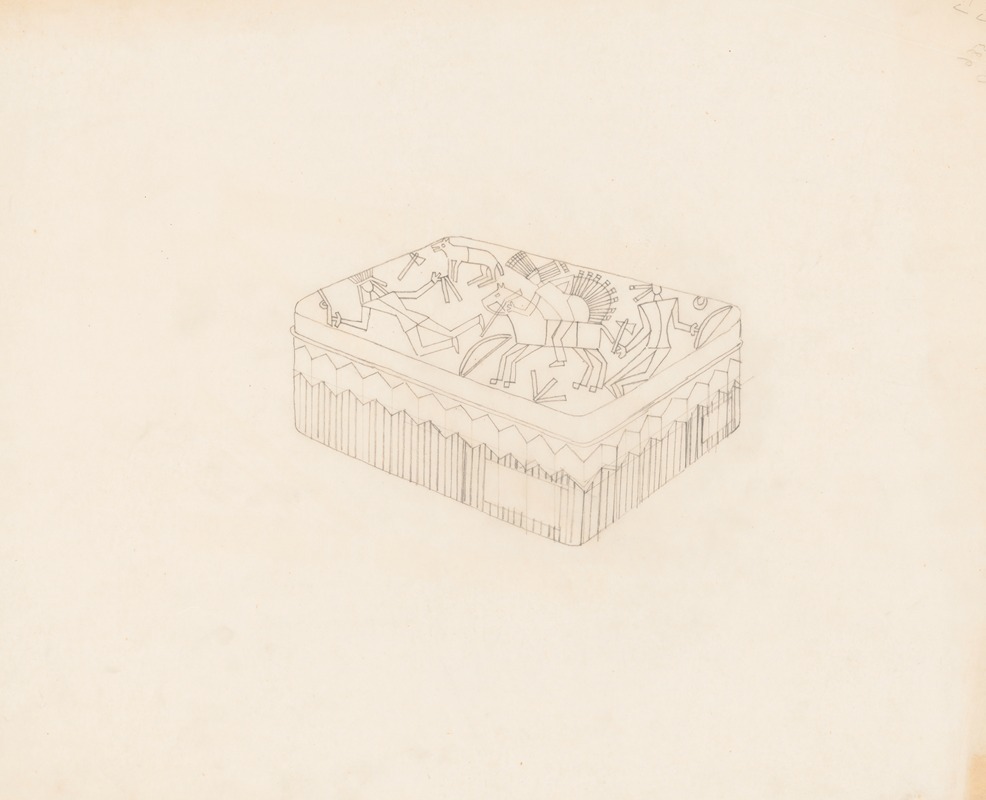
Graphic design drawings for Barricini Candy packages. 3-D Study, rectangular candy box with Indian motif
A hand-painted replica of Winold Reiss’s masterpiece Graphic design drawings for Barricini Candy packages. 3-D Study, rectangular candy box with Indian motif, meticulously crafted by professional artists to capture the true essence of the original. Each piece is created with museum-quality canvas and rare mineral pigments, carefully painted by experienced artists with delicate brushstrokes and rich, layered colors to perfectly recreate the texture of the original artwork. Unlike machine-printed reproductions, this hand-painted version brings the painting to life, infused with the artist’s emotions and skill in every stroke. Whether for personal collection or home decoration, it instantly elevates the artistic atmosphere of any space.
Winold Reiss was a German-American artist and designer known for his contributions to American art and design in the early to mid-20th century. Born in Germany in 1886, Reiss immigrated to the United States in 1913, where he became renowned for his portraits, graphic designs, and architectural work. He was particularly noted for his depictions of Native American subjects and his innovative use of color and form.
One of Reiss's notable contributions to graphic design was his work for Barricini Candies, a popular confectionery brand in the United States during the early 20th century. Among his designs for Barricini, the "3-D Study, rectangular candy box with Indian motif" stands out as a significant piece. This design reflects Reiss's fascination with Native American culture, which was a recurring theme in his work. His designs often incorporated elements inspired by Native American art, which he approached with a sense of respect and admiration.
The candy box design by Reiss for Barricini is characterized by its use of vibrant colors and geometric patterns, which were influenced by Native American motifs. The rectangular shape of the box provided a canvas for Reiss to explore three-dimensional design elements, creating a visually striking package that would have stood out on store shelves. The use of an Indian motif was not only a testament to Reiss's artistic interests but also a reflection of the broader cultural fascination with Native American imagery during this period in American history.
Reiss's work for Barricini Candies is an example of how commercial art and graphic design can intersect with cultural themes and artistic expression. His ability to blend traditional artistic techniques with modern design principles made his work distinctive and influential. The candy box design would have served both a functional purpose, as packaging for sweets, and an aesthetic one, as a piece of art that engaged consumers visually.
Throughout his career, Winold Reiss contributed to various fields, including interior design, mural painting, and illustration. His work was featured in numerous exhibitions, and he was commissioned for several high-profile projects, including the design of murals for the Cincinnati Union Terminal and the Harlem YMCA. Reiss's legacy in the field of graphic design is marked by his innovative approach to integrating cultural motifs into commercial art, as exemplified by his Barricini Candy package designs.
In summary, Winold Reiss's design for the Barricini Candy box with an Indian motif is a notable example of his work that combines cultural appreciation with commercial design. His contributions to graphic design and his unique artistic vision continue to be recognized and celebrated in the history of American art.





![Designs for Alamac Hotel Congo Room, 71st and Broadway, New York, NY.] [Six color studies of interior, furniture, and murals](/imgs/249310/s/winold-reiss-designs-for-alamac-hotel-congo-room-71st-and-broadway-new-york-ny-six-color-studies-of-interior-furniture-and-murals-3a813bdb.jpg)
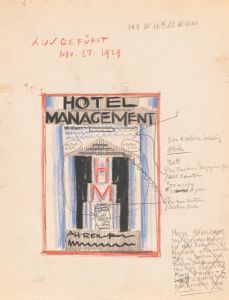
![Graphic design drawings for Barricini Candy packages.] [3-D Study for 6 rectangular boxes](/imgs/249345/s/winold-reiss-graphic-design-drawings-for-barricini-candy-packages-3d-study-for-6-rectangular-boxes-2f81667e.jpg)
![Graphic design drawings for Barricini Candy packages.] [3-D Study, circular candy box with Indian motif on blue background](/imgs/249346/s/winold-reiss-graphic-design-drawings-for-barricini-candy-packages-3d-study-circular-candy-box-with-indian-motif-on-blue-background-8cd7e0d7.jpg)
![Graphic design drawings for Barricini Candy packages.] [Study, wheel pattern lid design in blue, yellow, and gold](/imgs/249348/s/winold-reiss-graphic-design-drawings-for-barricini-candy-packages-study-wheel-pattern-lid-design-in-blue-yellow-and-gold-18aaf641.jpg)
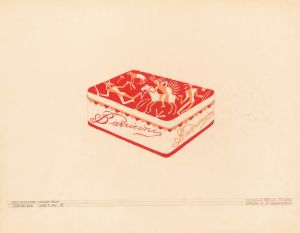
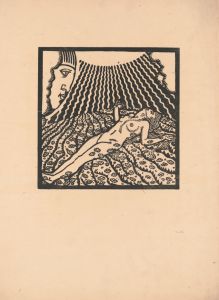
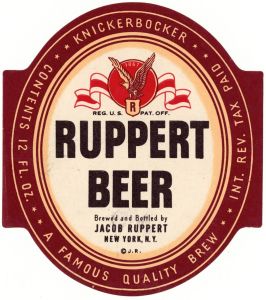
![Design proposals for Puck Theater, New York, NY.] [Interior perspective study.](/imgs/249413/s/winold-reiss-design-proposals-for-puck-theater-new-york-ny-interior-perspective-study-f0303b2a.jpg)
![Drawings for proposed decorations of Mike Lyman’s Restaurant, 424 W. Sixth St., Los Angeles, CA.] [Drawing #10, Scheme 1; Color scheme for ceiling – main dining room](/imgs/249426/s/winold-reiss-drawings-for-proposed-decorations-of-mike-lymans-restaurant-424-w-sixth-st-los-angeles-ca-drawing-10-scheme-1-color-scheme-for-ceiling-main-dining-room-6113fb5a.jpg)
![Graphic designs for Fortune magazine.] [Studies drawn on black paper](/imgs/249428/s/winold-reiss-graphic-designs-for-fortune-magazine-studies-drawn-on-black-paper-f56eedcc.jpg)
![Miscellaneous small sketches for inlaid table tops.] [Design with red and blue cubic motif](/imgs/249439/s/winold-reiss-miscellaneous-small-sketches-for-inlaid-table-tops-design-with-red-and-blue-cubic-motif-47eb56d2.jpg)
![Suggested treatments of Auditorium for Theatre and Concert Hall, New York World’s Fair 1939.] [Sketch for Scheme A](/imgs/249446/s/winold-reiss-suggested-treatments-of-auditorium-for-theatre-and-concert-hall-new-york-worlds-fair-1939-sketch-for-scheme-a-e530668f.jpg)